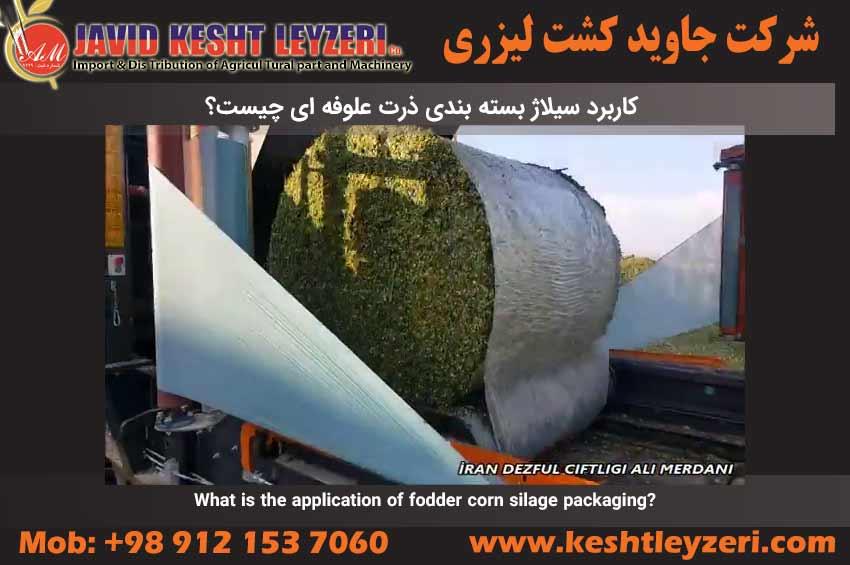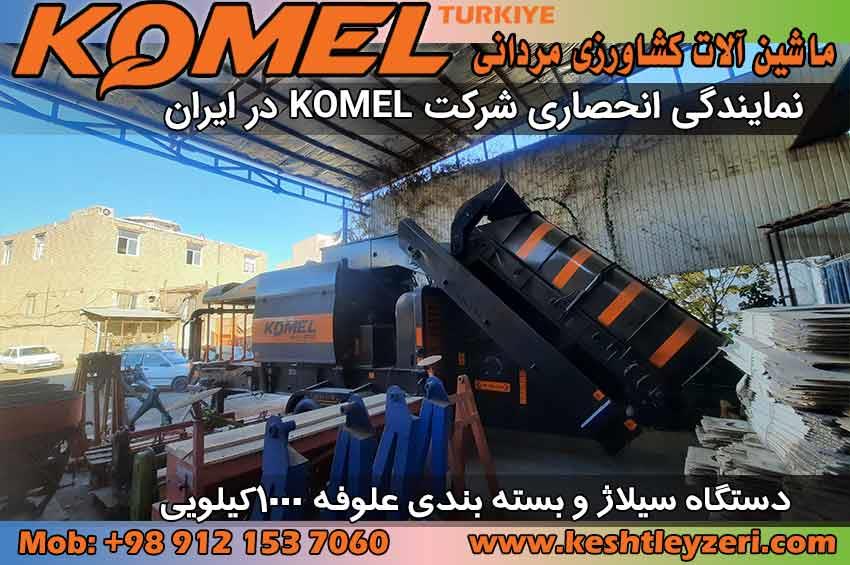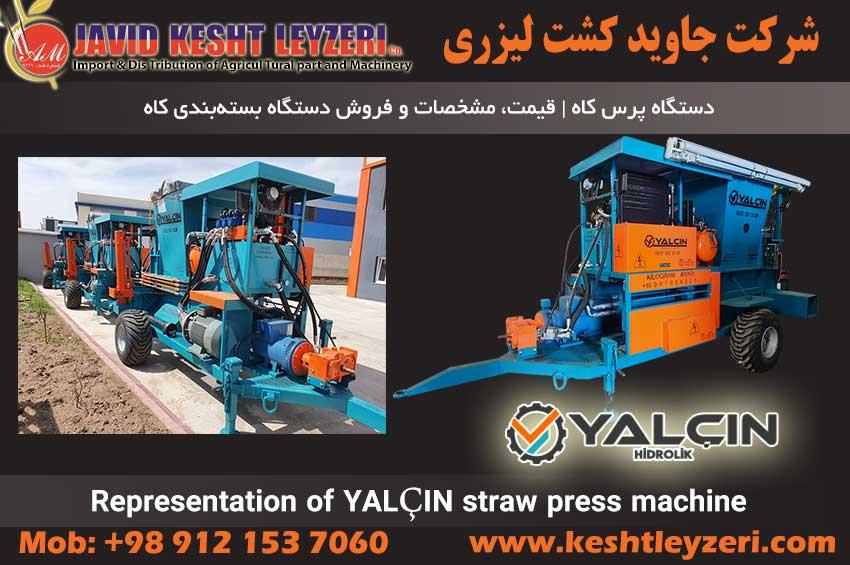
What is the application of fodder corn silage packaging?
javid keshtleyzeri Co.ltd
Silage is a fermented material obtained from keeping high-moisture forage in anaerobic and acidic conditions. This product is one of the main components of animal nutrition and is widely used in animal nutrition due to its low cost. When forage corn is picked from the ground and chopped, it is transported by vehicle, such as a truck, to the feedlot and must be quickly converted into silage, as the introduction of air causes fungal activity in it.
Corn silage has a better quality than other types of silage due to its high amount of carbohydrates, and animals usually use it more willingly. In fact, corn silage is used as the main ration in feeding various livestock. In this section, you are going to learn about the use of silage for corn packaging and read everything related to this issue.
The following is the list of contents of this section:
What is fodder corn silage?
What are the ingredients of corn silage?
What is the process of preparing fodder corn silage?
How to recognize good silage?
What is the importance of using packaged corn silage?
What are the advantages of using packaged corn silage for animal feed?
Below are the explanations of the above questions.
What is fodder corn silage?
Corn silage is a type of fermented fodder that is obtained in the form of a paste from keeping corn fodder with high humidity in anaerobic and acidic conditions. This process creates a food for livestock, which is produced through the process of fungal fermentation. Corn silage has a higher quality than other types of silage due to its high amount of carbohydrates and is used as a main ration in feeding various livestock. When forage corn is harvested and chopped, it is quickly turned into silage to reduce erosion and fungal activity on it. Corn silage is an important and cheap component for feeding livestock and is very important in the livestock industry.
Maize silage is one of the best sources of feed for various livestock such as cows, calves, dairy cows, beef cattle, sheep, sheep, camels, ostriches, etc. This fodder increases the lactation and fertility of livestock and provides the lack of food sources for livestock. Maize silage has high amounts of soluble carbohydrates, which are known to be an excellent feed for cows and increase milk production.
What are the ingredients of corn silage?
Corn silage is made from fodder corn. This corn is dried by removing the gluten and then it is used in crushed or powdered form. Also, to maintain quality and durability, acids or additives such as propionic acid can be added to it. Among its other ingredients, we can mention water and corn wax, which play a very important role in the process of making silage.
Corn silage contains starch and fiber at the same time, and the amount of combination of these two factors is different depending on the genetics of the plant, growth conditions and growth stages. We should also pay attention to the amount of nitrates in corn silage, because the high use of nitrogen fertilizer can lead to an increase in nitrates in corn silage. This issue can be harmful to the health of animals. Therefore, in the production of corn silage, we must pay attention to these special points.
What is the process of preparing fodder corn silage?
First of all, the corn harvest time should be checked. It should be harvested when the corn is at the peak of growth and the upper parts of the plant are dried. After harvesting, the corn is cut to the right size. After crushing, some fertilizer is added to it for a better fermentation process. Then the corn is pressed to remove excess oxygen from the air and close it faster. In this way, oxidation and low quality of silage are prevented. When using silage, it should be ensured that it is well prepared and stored.
Its steps are mentioned below.
Cultivation of suitable fodder
Harvest at the right time
Chopping fodder by chopper
Adjust humidity
piling fodder
Silo covering
Silage preparation is done in the warm months of the year. This process begins with the cultivation of fodder suitable for preparing animal feed. Almost any type of vegetable can be ensiled and used, but the most appropriate type of crop should be cultivated according to regional conditions, weather conditions and economic efficiency.
Too wet forage is not suitable for ensiling, because silage bacteria need water to multiply and develop. When forage is too wet, more microbial activity occurs, which is not suitable for ensiling. The amount of total bacterial activity increases with the addition of a more watery product, which is essential for bacterial growth. Due to the limited amount of food in the corn, the beneficial bacteria to compete with the non-bacteria, and in the case of lack of moisture, it is reduced. 10% of the dry matter of corn fodder consists of sugars, and this makes corn fodder the best product for fermentation.
Normally, silage is ready after 6 weeks and is suitable for animal feed 2 months after preparation. After this period, silage can be used for approximately 6 months without poor quality.
It is better to crush corn fodder during the day; Because the soluble sugar of the fodder is in a better state during the day. The best size for chopping the plant is 1 to 3 cm long pieces. The transportation of chopped fodder from the field to the silo should be done immediately, and in some cases even the operation of filling, pounding and compressing the fodder mass should take place during the same day. The appropriate speed of compression of fodder mass plays a very important role in the quality of corn silage. The purpose of compressing fodder silage is to remove the air in the fodder pieces; Because the oxygen in the silage causes the oxidation of the sugars in the fodder and causes it to be wasted.
Immediately after filling the silo, it is essential to cover it completely with a tight plastic cover and carefully block all air infiltration channels. Any carelessness in this operation causes oxygen to enter the silo and oxidation. With a simple, practical and cheap method, after covering the silo with a plastic cover, old machinery tires can be used to maintain and weigh it down. You can even use sandbags and cement blocks for this purpose. When filling the silo, different additives can be used to improve the quality of silage produced, depending on the conditions. Today, in many parts of the world, biological products are used as silage additives.
How to recognize good silage?
- The color of silage should be olive green
- It should have medium humidity
- It should not look burnt
- It does not have the smell of butyric acid
- It should have a lot of lactic acid
- Must be free of mold
Corn silage can easily provide up to 30% or half of the dry matter of the daily feed of dairy cows and it is very cheap to prepare.
In the production of corn silage, there are different standards regarding the amount of nutrients. But in general, the above values are considered as standard in different countries. According to these standards, it is possible to measure the quality and effect of corn silage on increasing animal milking.
Parameters for detecting fodder corn silage quality:
- pH: A value higher than 4.0 pH usually indicates a high amount of dry matter. Sometimes this value indicates that the fodder corn silage has been exposed to a large amount of air.
- Ammonia (NA): The high amount of ammonia is caused by the breakdown of proteins. Corn silage has a low amount of protein (about 8%).
- Lactic acid: the high amount of this acid indicates the correct storage of silage. Low lactic acid indicates improper fermentation and may be due to high dry matter or exposure to air.
- Acetic acid: a high amount of acetic acid usually indicates high humidity or improper packaging of silage. But this case is not always a sign of improper maintenance and should be checked carefully.
At present, fodder corn silage is used in packaged form for animal feed all over the world and in Iran. For optimal use, it is very important to manage it correctly. Maize silage production should be protected from air to reduce costs and waste. One of the important points about fodder corn silage is to keep it in the right conditions. Therefore, proper packaging and timely consumption are of great importance. Otherwise, corn silage can quickly spoil and perish in the open air.
What is the importance of using packaged corn silage?
In 1980, silage packaging was first introduced and quickly caught the attention of the public. In recent years, the method of ensiling fodder has become one of the popular methods to provide animal feed in animal breeding centers. This development has expanded the use of packaged silage in order to increase production, improve speed and ease.
Silage grains such as alfalfa and fodder corn have high moisture, which makes them sensitive to anaerobic and aerobic microbes. These silages play a vital role in preventing possible damages and spoilage and improving the fermentation process. Therefore, silage packaging is a way to supply, preserve dry matter, prevent spoilage, improve the fermentation process, increase digestion and finally increase the production of livestock products.
Since packaged silage has many advantages; including not losing tonnage, maintaining health and quality, preventing corruption and wastage of materials, ease of handling, preventing contamination from entering the product, and having ideal conditions for fermentation, makes this method to be considered as a suitable option in the animal feed sector. take
In general, the packaged corn silage is considered a healthy and practical option to maintain the quality and nutritional value of this product.
What are the advantages of using packaged corn silage for animal feed?
1. No drop in the tonnage of packed fodder corn:
- The vacuum of fodder corn prevents the passage of sunlight and the exit of sap, and its complete press also prevents air from remaining in the fodder corn and thus prevents its corruption and waste.
2. The healthiness of fodder corn packaging:
- After harvesting, fodder corn is directly entered into the fodder corn packaging machine and is pressed and packed by the machine. In this operation, there is no need to use heavy machinery to press fodder corn, and as a result, contamination enters the corn silage by means of wheels. It does not become fodder.
3. Ideal silo conditions:
- The perfect press that is applied to fodder corn and the creation of ideal silage conditions, i.e. the same anaerobic conditions as fodder corn silage remains completely healthy, and because fodder corn does not get moldy and fungal, we no longer face the problems of distinguishing moldy and fungal fodder corn from healthy fodder corn. we are not
4. Conserve nutrients:
- In fodder corn packaging, sap, extract and nutrients remain in fodder corn packages.
5. Complete consumption of fodder corn:
- Fodder corn is completely pressed in the machine with a power of 150 atmospheres and all fodder corn is consumed.
6. Silage uniformity:
- The silage resulting from the fermentation of fodder corn is uniform in silage packaging, and all fodder corn points inside the packages are fermented in the same way.
7. Flexibility in maintenance:
- In every corner of the livestock farm and in different temperatures and weather conditions, you can keep the packed fodder corn.
8. Easy to move:
- The packed fodder corn can be easily moved to any place.
9. Health and compliance standards:
- The packed fodder corn silage is completely hygienic, and this is one of its main advantages, because hygiene is observed in all stages of fodder corn packaging.
Hoping for the day when we all know the valuable benefits of this method better and benefit from it.
Click to see pictures of fodder corn silage packing machine.






